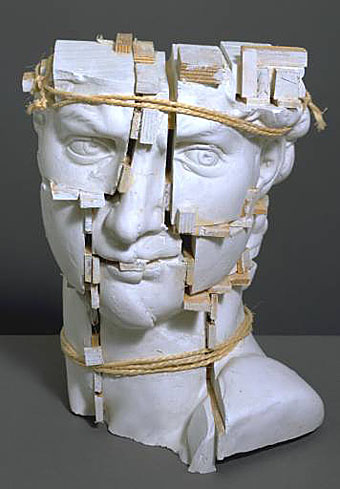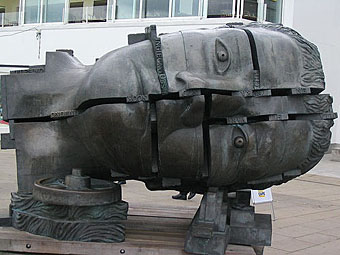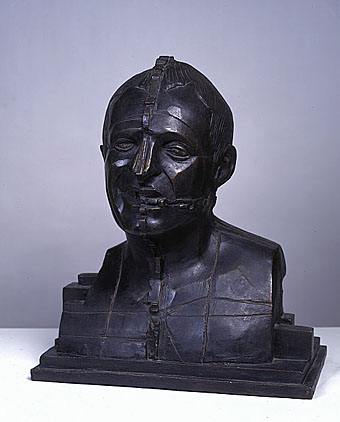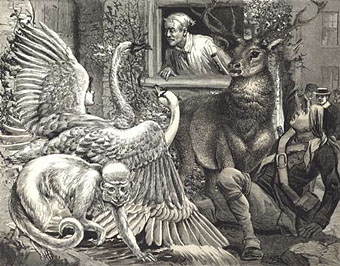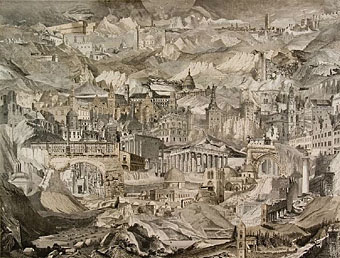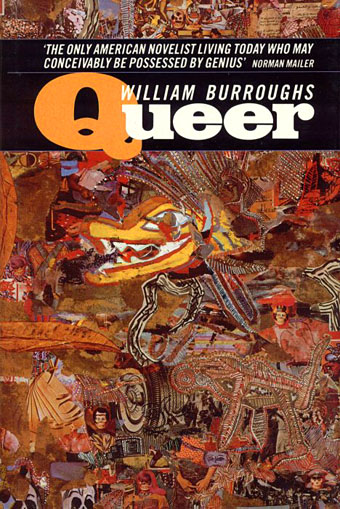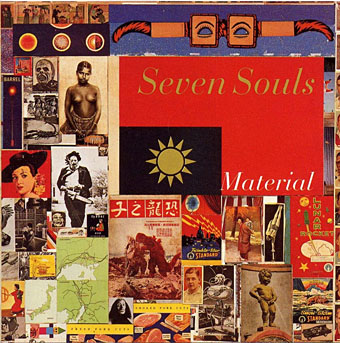Michelangelo’s ‘David’ (1987).
In a similar vein to the dismembered Soviet monument in the previous post, there’s the sculpture of the late, great Eduardo Paolozzi (1924–2005). The giant head of Invention is especially impressive when seen in situ outside London’s Design Museum, its pieces separated by the words of a Leonardo da Vinci quotation: “Human subtlety will never devise an invention more beautiful, more simple or more direct than does Nature, because in her inventions, nothing is lacking and nothing is superfluous.”
It should be noted, in light of another recent post, that Paolozzi was associated with New Worlds when the magazine was at its height, credited (jokingly) as “Aeronautics Advisor” even though he had little or nothing to do with the publication aside from being friends with contributor JG Ballard. There’s a great Studio International discussion here from 1971 between Paolozzi, Ballard and critic Frank Whitford, in which they talk around the subjects of Surrealism, violence in life and the arts, and other typically Ballardian concerns.
Invention.
Portrait of Richard Rogers (1988).
Previously on { feuilleton }
• Revenant volumes: Bob Haberfield, New Worlds and others
• JG Ballard book covers
• Ballard on Modernism

